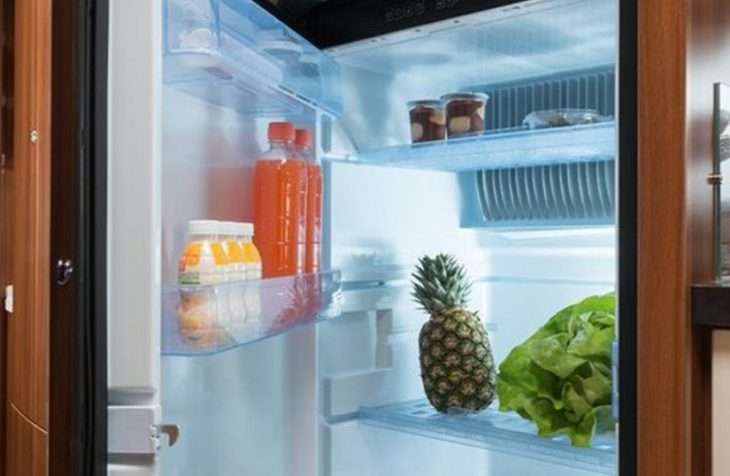How to Defrost an RV Fridge
Efficient power consumption is a significant concern for most homeowners. The need to be efficient is amplified when you live in an RV. the reason being access to the grid may not always be available, especially when boondocking. To avoid any surprise power outages due to battery draining, you need to ensure all your appliances are running efficiently.
Aside from the air conditioner, the RV fridge is the second-largest consumer of energy, which means if the freezer is icing up, you will end up draining more power than is necessary. To avoid this, you need to defrost your RV fridge.
How to defrost an RV fridge
Remove all the food and store it in a cooler with ice packs to keep the food cold. Then unplug the refrigerator and remove all the drawers and shelves. Alternatively, you can switch it off from the outlet. And open the fridge door to let in warm air to begin the defrosting process.
Place a deep tin or pan at the bottom of the fridge to collect all the melting ice water. To fast-track the defrosting process, place a bowl of hot water in the refrigerator to melt the ice faster. You can also nudge loose ice pieces and remove them.
Modern fridges have auto defrost settings you can use to run the defrost cycle and automatically defrost the refrigerator. This will prevent the buildup of ice in the freezer before you come around to defrost it manually.
You can also direct a fan towards the fridge that is blowing warm air to help the ice melt faster. You can also place towels in the refrigerator to absorb excess water from melting ice to avoid an overflow that may end up damaging your RV’s floor.
Once all the ice has melted, proceed to clean the fried and wipe it dry. Depending on the fridge’s size and the depth of ice frost, this may take a few hours or an entire day. Then clean the drawers and shelves and place them back in the fridge.
Finally, plug the fridge or turn it on and check to see if the thermostat is set to the correct temperature. Shut the door and let the refrigerator cool down. Then put the food back in the fridge once it gets cold.
Defrosting your Dometic refrigerator
Power down the refrigerator by pressing the power down consistently for three seconds. Then remove all the food and ice cube trays and leave the fridge door open to allow warm air to begin the defrosting process.
You can run the Dometic refrigerator defrost cycle to start the defrosting process. Once the fridge is fully defrosted, clean the fridge, and put the food back into the fridge.
Signs that it is time to defrost your fridge
When you start seeing large ice pieces forming in your freezer, then it is time to defrost the fridge. As a rule of thumb, try to defrost your fridge at least two times annually. You can also defrost it when you notice a spike in energy consumption despite no changes in electric appliance usage. This is a sign that the fridge is using up more energy than usual.
Can I defrost my freezer without turning off the fridge?
Yes. Move all the food from the freezer into the fridge, place a bowl of scalding hot water into the freezer, and let it defrost. You can also leave the freezer door open to enable the ice to melt. Place towels and a pan in the freezer to hold water from melting ice.
Another way of defrosting the freezer when the fridge is still on is by blowing warm air into the freezer using a warm fan or a hairdryer. Be careful not to get water into the hairdryer or let the hairdryer touch the freezer walls to avoid electrocution.
Is ice buildup in a fridge bad?
Not really. The only downside of having ice in the fridge section is that water needs a lot more energy to cool, which translates to higher energy consumption. That and the fact that ice in the fridge means frozen foods despite that not being the plan. This will change the molecules of the food and make it taste soggy. Thawed fruits and veggies from the fridge will make them taste watery.
Why is my RV fridge freezing up?
This is a sign of a faulty door seal or hinges. If the door does not fit properly, cold air coming into the fridge requires cooling to maintain refrigerator temperature. This leads to ice buildup when the warm air cools and condenses inside the refrigerator.
Another cause could be leaving the fridge door open for too long. The longer the fridge door stays broken, the more the ice buildup you will get in the fridge. The ice buildup could also be as a result of a clogged freezer drain and thermostat temperature setting.
How do I stop ice buildup in my fridge?
Check to see if the seal around the fridge door is loose and fix it. Also, check the fridge door hinges and replace them if they are broken or damaged. Always ensure you close the fridge door as soon as you are done using it to reduce the warm air influx into the fridge.
Countercheck the thermostat setting to ensure it is not too low as this may cause the fridge to get too cold and freeze over. Ensure your refrigerator is venting correctly in the back to allows heat to dissipate.
This will prevent overcooling from making up for the accumulated heat around the fridge compressor. Lastly, ensure your freezer drain is not clogged as this can also lead to cold air circulation problems.
